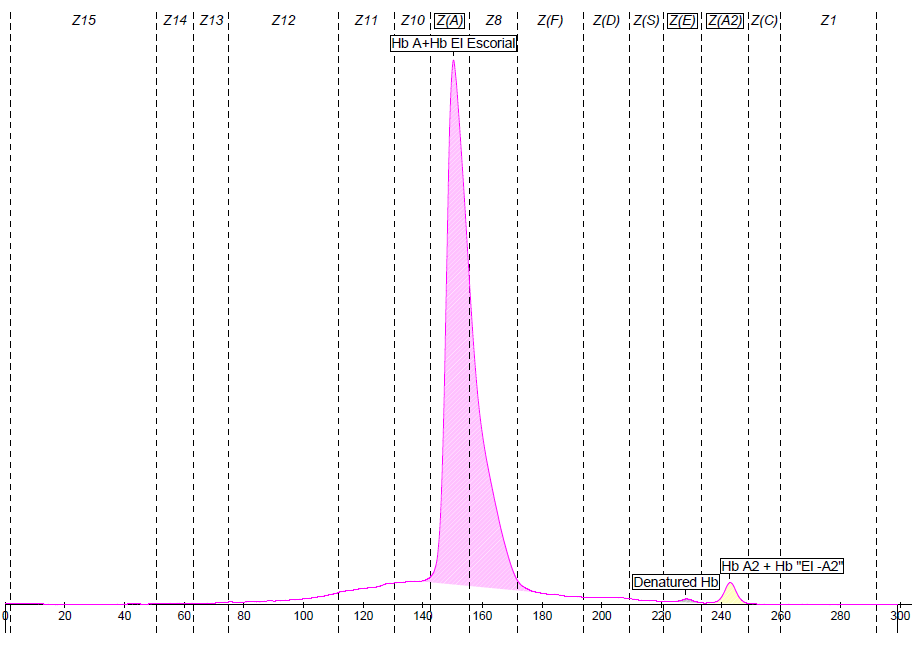General information
Globin chain involved
Status
Heterozygous
Migration zones
Migration positions
150, 243
Sickle Cell Disease: No
Thalassemic variant: No
Capillary Electrophoresis
Fractions
Value %
Hb A + Hb El Escorial
97.9
Denatured Hb
0.3
Hb A2 + Hb "El Escorial-A2"
1.8
Comments
Although Hb El Escorial is a co-migrating variant of normal fractions, this unstable variant leads to highly distorted peaks of the normal Hb A and Hb A2 fractions.
Mutation data
Heterozygous Hb El Escorial
Mutation
HGVS Nomenclature
Alpha2 or Alpha1 96(G3) Val>Asp
HBA2:c.290T>A (or HBA1)
Hematological parameters
Name
Result
RBC Count
No information
Total Hemoglobin
No information
MCV
No information
MCH
No information
Blood smear
No information
Other analysis
No information
Comments on hematology
Microcytic and hypochromic ferropenic anemia
Clinical context
Clinical presentation
No data
Clinical risk
No data
Variant information
Stability
Mildly unstable
Oxygen affinity
Slightly decreased
Ethnicities in literature
Found in Black African populations: met in Nigerian families living in Spain and in Italy
Comments on variant information
The rare variant Hb El Escorial comes from a mutation registered in the HBA2 gene only, but the case presented here concerns a mutation in the HBA1 gene.
Scientific Literature
Scientific references
Globin Chain involved
Status
The term "Double Heterozygous" refers to cases of heterozygosity on different globin chain types, while the term "Compound Heterozygous" refers to cases of heterozygosity on the same globin chain type.
For example, S/G-Pest is a Double Heterozygous case (beta and alpha-globin chains are mutated) and S/C is a Compound Heterozygous case (only beta-globin chains are mutated).
Migration zones
Migration positions
Sickle Cell Disease
Thalassemic variant
Capillary Electrophoresis
Variant information
Ethnicities are provided for informational purposes only and are based on scientific literature and conference posters.
A hemoglobin variant may therefore be present in populations of ethnic origins or countries not listed here.

